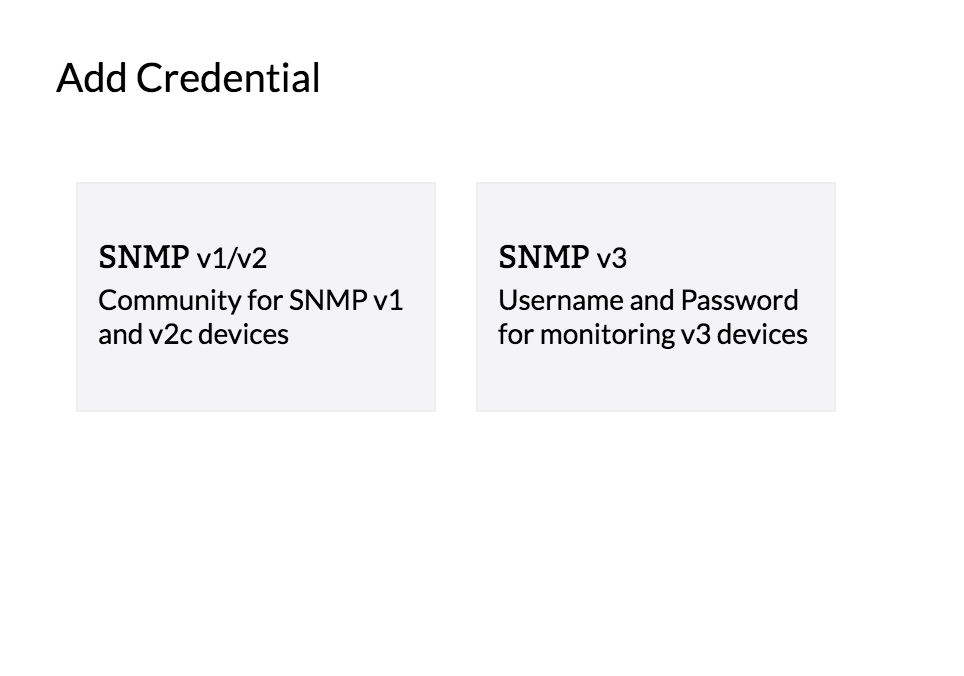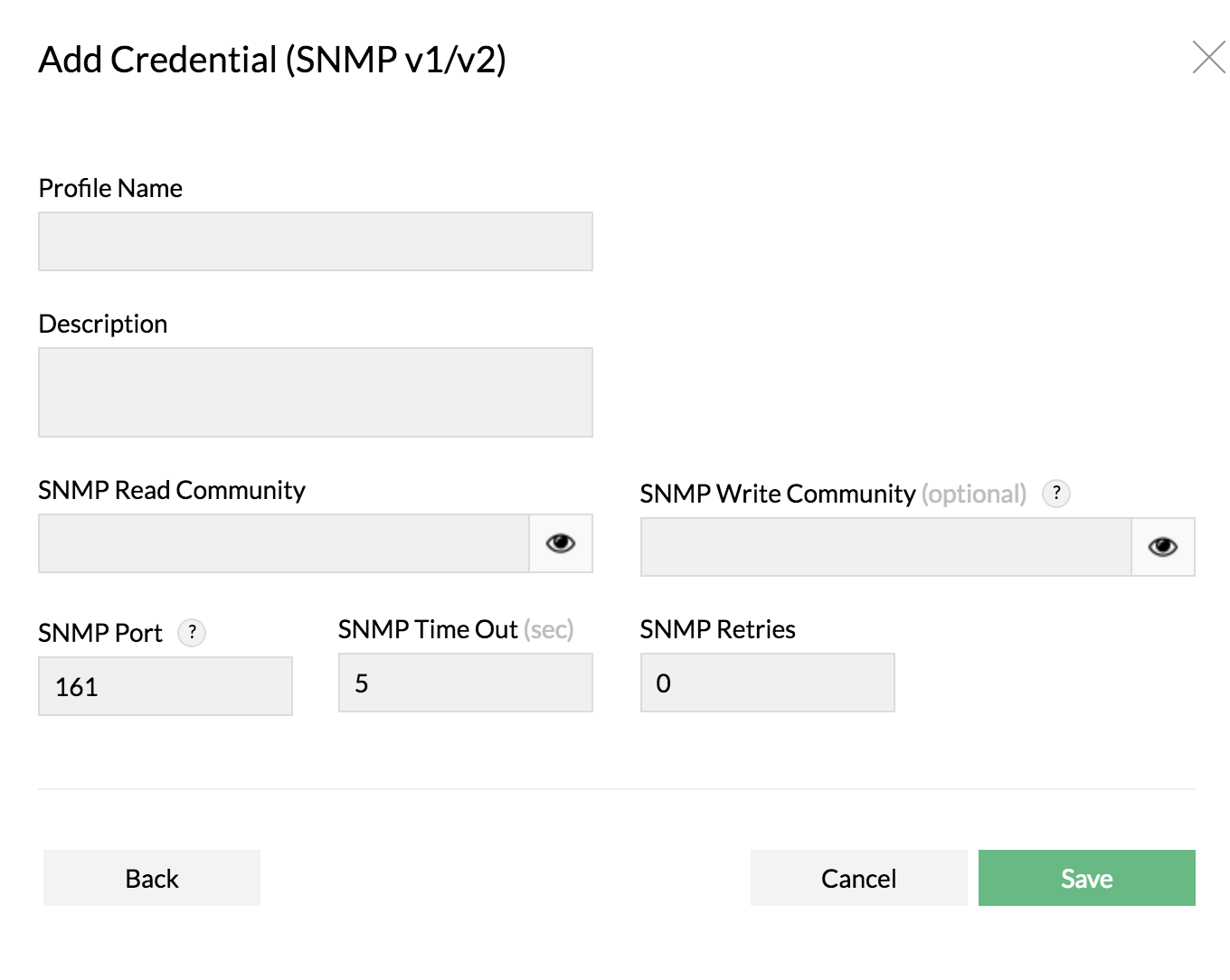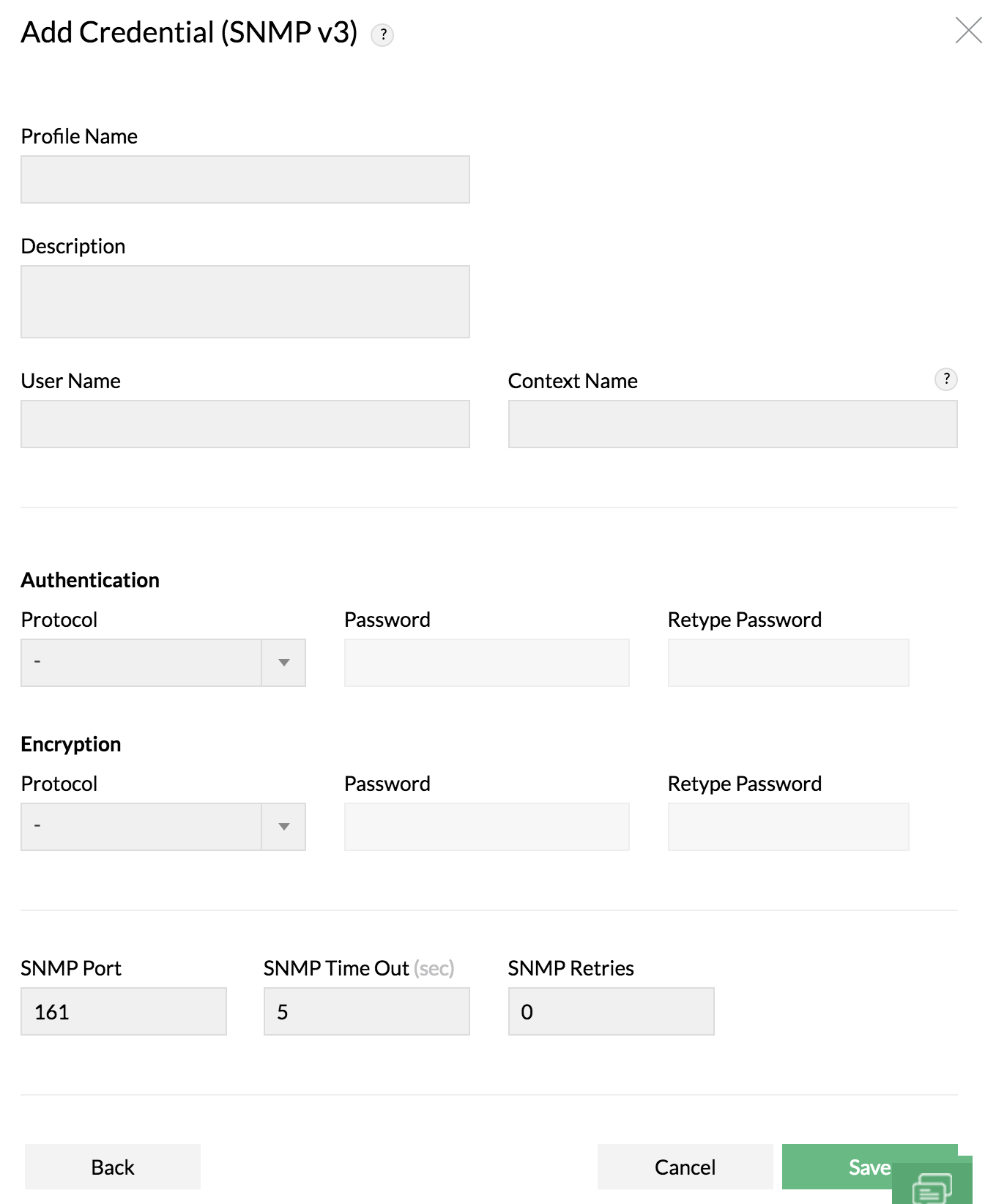OpUtils accesses the remote devices using the protocols SNMP, CLI, or WMI. The credentials like the password/snmp community, port etc., may differ for different device types. Pre-configuring a set of credentials in OpUtils helps applying them to multiple devices at a time, saving a lot of manual effort.

Monitoring Credentials (SNMPv1/v2,SNMPv3):
SNMP v1/SNMPv2: SNMPv1 and SNMPv2 are community based security models. They use access mechanisms known as 'Read community' (for Read access) and 'Write community' ( for Write access ). The following are the parameters that are essential for a SNMP v1/v2 credential : Provide a name for the Credential name and description.

SNMP v3: SNMPv3 is a user based security model. It provides secure access to the devices by a combination authenticating and encrypting packets over the network. The security features provided in SNMPv3 are Message integrity, Authentication and Encryption. If you select SNMPv3 as the credential type, then configure the following parameters.
1. Name: Credential name
2. Description: A brief description about the credential.
3. User Name: The user (principal) on behalf of whom the message is being exchanged.
4. Context Name: An SNMP context name or "context" in short, is a collection of management information accessible by an SNMP entity. An item of management information may exist in more than one context. An SNMP entity potentially has access to many contexts. In other words, if a management information has been defined under certain context by an SNMPv3 entity, then any management application can access that information by giving that context name. The "context name" is an octet string, which has at least one management information.
5. Authentication: Select any of the authentication protocols either MD5 or SHA and enter the password. MD5 and SHA are processes which are used for generating authentication/privacy keys in SNMPv3 applications.
6. Encryption: Select any of the encryption protocols either DES or EAS-128 and enter the password. Note: Only after configuring Authentication it is possible to configure Encryption.
7. SNMP Port: SNMP port number.
8. SNMP Timeout:SNMP timeout in seconds.
9. SNMP Retries: SNMP retries.
Note:

How to check if the snmpEngineBoots and snmpEngineTime values specified in the device are in-sync with those in the SNMP Agent ?
You can use the Wireshark tool to check if the snmpEngineBoots and snmpEngineTime parameters specified in the device and the SNMP Agent are in-sync with one another.
Download wireshark from here and query for the SNMP response. If the SNMP response message is a report with OID 1.3.6.1.6.3.15.1.1.2, then it means that the boot time and boot count are not synchronized.
The following are the pre-requisites for the various types of credentials supported in OpUtils
SNMPv1 / v2:
SNMP v3:
Thank you for your feedback!